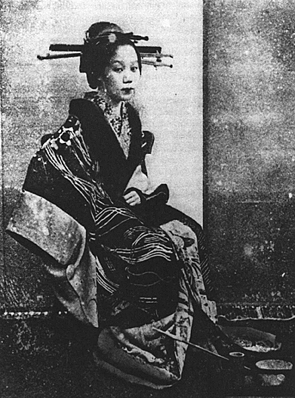|

|
Throughout the 19th century the Yoshiwara courtesans faced increasing competition from geisha and lower-priced prostitutes from the east bank district of Fukugawa even as the status of geisha themselves became more ambiguous. While true, licensed geisha still retained the status of skilled dancers and musicians and became popular among Tokyo's cultural elite, more women calling themselves geisha were simply common prostitutes. By the 20th century the term "geisha" became even more indiscriminately applied (especially by foreigners) so that many people today (again, especially foreigners) consider geisha as synonymous with "traditional high-class Japanese prostitute." Indeed, there are instances when the high cultural association of geisha is exploited to lend common prostitution a veneer of respectability, but there also still exists a (dwindling) community of "true" geisha who in relative historical terms are the tayû of today. |
|
|
|